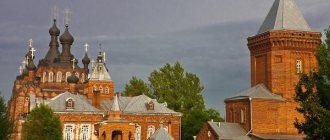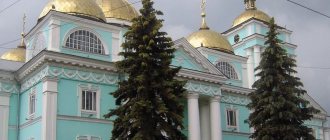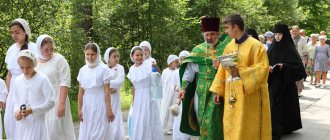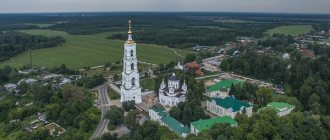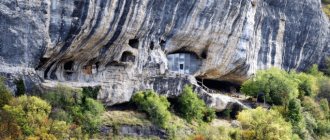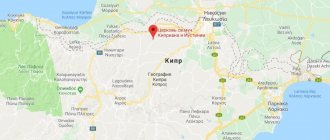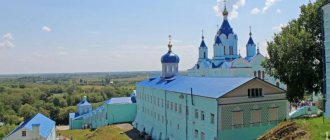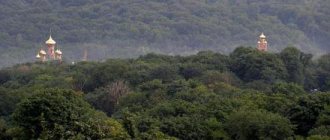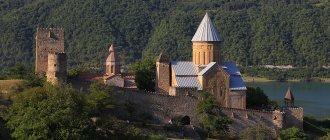Mir
Russia Moscow region Pushkino Church of the Savior Not Made by Hands in Klyazma Map is loading…
{"format":"leaflet","minzoom":false,"maxzoom":false,"limit":50,"offset":0,"link":"all","sort":[""], "order":[],"headers":"show","mainlabel":"","intro":"","outro":"","searchlabel":"\u2026 \u0441\u043b\u0435\ u0434\u0443\u044e\u0449\u0438\u0435 \u0440\u0435\u0437\u0443\u043b\u044c\u0442\u0430\u0442\u044b","default":"","import-annotation":false,"width ":"auto","height":"350px","centre":{"text":"","title":"""link":"""lat":55.97702799999999712099452153779566287994384765625,"lon": 37.8378330000000033805918064899742603302001953125,"icon":""},"title":"","label":"","icon":"","lines":[],"polygons":[],"circles":[ ],"rectangles":[],"copycoords":false,"static":false,"zoom":8,"defzoom":14,"layers":["OpenStreetMap"],"image layers":[] ,"overlays":[],"resizable":false,"fullscreen":true,"scrollwheelzoom":true,"cluster":false,"clustermaxzoom":9,"clusterzoomonclick":true,"clustermaxradius":80, "clusterspiderfy":true,"geojson":"","clicktarget":"","showtitle":true,"hidenamespace":false,"template":"","userparam":"","activeicon": "","pagelabel":false,"ajaxcoordproperty":"","ajaxquery":"","locations":[{"text":"\u003Cb\u003E\u003Ca href=\"/palomnik/%D0% A6%D0%B5%D1%80%D0%BA%D0%BE%D0%B2%D1%8C_%D0%A1%D0%BF%D0%B0%D1%81%D0%B0_%D0%9D% D0%B5%D1%80%D1%83%D0%BA%D0%BE%D1%82%D0%B2%D0%BE%D1%80%D0%BD%D0%BE%D0%B3%D0% BE_%D0%9E%D0%B1%D1%80%D0%B0%D0%B7%D0%B0_%D0%B2_%D0%9A%D0%BB%D1%8F%D0%B7%D1%8C% D0%BC%D0%B5\" title=\"\u0426\u0435\u0440\u043a\u043e\u0432\u044c \u0421\u043f\u0430\u0441\u0430 \u041d\u0435\u0440\u0443\u043a\u04 3e\ u0442\u0432\u043e\u0440\u043d\u043e\u0433\u043e \u041e\u0431\u0440\u0430\u0437\u0430 \u0432 \u041a\u043b\u044f\u0437\u044c\u 043c\u0435\»\u003E\u0426\ u0435\u0440\u043a\u043e\u0432\u044c \u0421\u043f\u0430\u0441\u0430 \u041d\u0435\u0440\u0443\u043a\u043e\u0442\u0432\u043e\u0 440\u043d\u043e\u0433\u043e\ u041e\u0431\u0440\u0430\u0437\u0430 \u0432 \u041a\u043b\u044f\u0437\u044c\u043c\u0435\u003C/a\u003E\u003C/b\u003E\u003Chr /\u0 03E\u003Ca href=\" /palomnik/%D0%A1%D0%B2%D0%BE%D0%B9%D1%81%D1%82%D0%B2%D0%BE:%D0%90%D0%BD%D0%BD%D0 %BE%D1%82%D0%B0%D1%86%D0%B8%D1%8F\" title=\"\u0421\u0432\u043e\u0439\u0441\u0442\u0432\u043e:\u0410\u043d\ "" 426\u0435\u0440 \u043a\u043e\u0432\u044c \u0421\u043f\u0430\u0441\u0430 \u041d\u0435\u0440\u0443\u043a\u043e\u0442\u0432\u043e\u0440\u043d\ u043e\u0433\u043e\u041e\u0431 \u0440\u0430\u0437\u0430 \u0432 \u041a\u003Cspan class=\»smw-highlighter\» data-type=\»2\» data-state=\»persistent\» data-title=\»\u0418\ u043d\u0444\u043e\u0440\u043c\u0430\u0446\u0438\u044f\" title=\"\u0426\u0435\u0440\u043a\u043e\u0432\u044c \u0421\u043f\u0430\u04 41\u0430\u041d\ u0435\u0440\u0443\u043a\u043e\u0442\u0432\u043e\u0440\u043d\u043e\u0433\u043e\u041e\u0431\u0440\u0430\u0437\u0430\u0432\u 041a\u043b\u044f\u0437\u044c\ u043c\u0435 (\u0426\u0435\u0440\u043a\u043e\u0432\u044c \u041d\u0438\u043a\u043e\u043b\u0430\u044f \u0427\u0443\u0434\u043e\u 0442\u0432\u043e\u0440\u0446 \u0430 \u0438 \u0410\u043b\u0435\u043a\u0441\u0438\u044f, \u043c\u0438\u0442\u0440\u043e\u043f\u043e\u043b\u0438\u0442\u043 0 \u041c\u043e\u0441\u043a\ u043e\u0432\u0441\u043a\u043e\u0433\u043e) \u2014 \u043f\u0440\u0430\u0432\u043e\u0441\u043b\u0430\u0432\u043d\u0430\u044f \ u0446\u0435\u0440\u043a\u043e \u0432\u044c \u0432 \u0441\u0442\u0438\u043b\u0435 \u043c\u043e\u0434\u0435\u0440\u043d \u0432 \u043f\u043e\u0441\u0451\u04 3b\u043a\u0435\u041a\u043b\u044f \u0437\u044c\u043c\u0430 (\u0441\u043e\u0432\u0440\u0435\u043c\u0435\u043d\u043d\u044b\u0439 \u043c\u0438\u043a\u0440\u043e\ u0440\u0430\u0439\u043e\ u043d \u0433\u043e\u0440\u043e\u0434\u0430 \u041f\u0443\u0448\u043a\u0438\u043d\u043e) \u041c\u043e\u0441\u043a\u043e\u0432\ u0441\u043a\u043e\u0439\u043e \u0431\u043b\u0430\u0441\u0442\u0438.\»\u003E\u003Cspan class=\»smwtext\»\u003E \u2026 \u003C/span\u003E\u003Cspan class=\»smwttcontent\»\u003E»'\ u0426\u0435\u0440\u043a\u043e\u0432\u044c \u0421\u043f\u0430\u0441\u0430 \u041d\u0435\u0440\u0443\u043a\u043e\u0442\u0432\u0 43e\u0440\u043d\u043e\u0433\ u043e \u041e\u0431\u0440\u0430\u0437\u0430 \u0432 \u041a\u043b\u044f\u0437\u044c\u043c\u0435"' (\u0426\u0435\u0440\u043a\u043 e\u0432\u044c\u041d\u0438 [https://azbyka.ru/otechnik/Aleksij_Moskovskij \u0410\u043b\u0435 \u043a\u0441\u0438\u044f, \u043c\u0438\u0442\u0440\u043e\u043f\u043e\u043b\u0438\u0442\u0430 \u041c\u043e\u0441\u043a\u043e \u0432\u0441\u043a\u043e\ u0433\u043e]) \u2014 \u043f\u0440\u0430\u0432\u043e\u0441\u043b\u0430\u0432\u043d\u0430\u044f \u0446\u0435\u0440\u043a\u043e \u0432\u044c \u0432 \u0441\ u0442\u0438\u043b\u0435 \u043c\u043e\u0434\u0435\u0440\u043d \u0432 \u043f\u043e\u0441\u0451\u043b\u043a\u0435 \u041a\u043b\ u044f\u0437\u044c\u043c\u0430 ( \u0441\u043e\u0432\u0440\u0435\u043c\u0435\u043d\u043d\u044b\u0439 \u043c\u0438\u043a\u0440\u043e\u0440\u0430\u0439\u043e\u 043d\u0433\u043e\u0440\u043e \u0434\u0430 \u041f\u0443\u0448\u043a\u0438\u043d\u043e) \u041c\u043e\u0441\u043a\u043e\u0432\u0441\u043a\u043e\u0439 \u043 e\u0431\u043b\u0430\u0441\ u0442\u0438.\u003C/span\u003E\u003C/span\u003E\u043e\u0440\u0430\u0439\u043e\u043d\u0433\u043e\u0440\u043e\u0434\u0430\u041f\u 0443\u0448\u043a\u0438 """title": "\u0426\ u0435\u0440\u043a\u043e\u0432\u044c \u0421\u043f\u0430\u0441\u0430 \u041d\u0435\u0440\u0443\u043a\u043e\u0442\u0432\u043e\u0 440\u043d\u043e\u0433\u043e\ u041e\u0431\u0440\u0430\u0437\u0430 \u0432 \u041a\u043b\u044f\u0437\u044c\u043c\u0435″,”link”:”””lat”:55.9770279999999971209945 2153779566287994384765625,"lon":37.8378330000000033805918064899742603302001953125,"icon ":""}],"imageLayers":[]}
55.976947; 37.837848
Russia, Moscow region, Pushkino, Klyazma microdistrict, Lermontovskaya street, 20
Pushkino, Moscow region
Russia
Telephone:
+7 496 537-87-20
Church of the Savior Not Made by Hands in Klyazma
(Church of St. Nicholas the Wonderworker and Alexy, Metropolitan of Moscow) is an Orthodox church in the Art Nouveau style in the village of Klyazma (a modern microdistrict of the city of Pushkino) in the Moscow region. The temple was built by the merchant of the 2nd guild Ivan Aleksandrovich Aleksandrenko at his own expense. Together with the Church of the Grebnevskaya Icon of the Mother of God, the temple forms the Spaso-Grebnevsky parish.
History[edit]
The temple was built by the merchant of the 2nd guild Ivan Aleksandrovich Aleksandrenko at his own expense. Initially, it was intended to be consecrated as Nikolo-Aleksievsky, and according to a number of sources, it never had time to become consecrated - the revolution prevented the start of services.
In 1938, the rector of the temple, mitered archpriest Leonid Florensky, was arrested and in 1939 exiled to Karaganda (Kazakhstan). Father Leonid died in Karaganda around 1940.
During the Soviet years, it served as a hostel, a warehouse, communal apartments, a pioneer camp, and a warehouse for the decorations of the Moscow Theater were built on 3 floors. Ostrovsky.
Opened in 1989, consecrated as Spassky and restored.
In 2007, the summer wooden church of the Grebnevskaya Icon of the Mother of God, which was founded in 1900, belonging to the Church of the Savior, burned down. At the moment (2016) construction of a new (already stone) church is underway. The new church consists of two floors: the upper (above-ground) floor of this church is a temple in honor of the Grebnevskaya Icon of the Mother of God (the above-ground church in honor of the Grebnevskaya Icon of the Mother of God is still unfinished (2016) and services are not yet held in it); on the lower (underground) floor there is a temple in honor of the holy venerable Alexander of Svirsky, where services are currently held.
Description of the architecture
The temple in the form of a cube is decorated with a dome, under which a pile of kokoshniks is built. On the western side rises a bell tower with fifteen bells. The building is decorated with majolica panels. The style shows the influence of modernism, the temple is called “neo-Russian”. Sketches for it were made by Vasnetsov’s student, I. Vashkov. The architect of the church is V. I. Motylev. There is an inscription on the tiled band of the drum indicating the date of foundation of the building - from 1913 to 1916.
The light tent has the shape of an octagon; there is an ensemble of kokoshniks on it, which becomes narrower at the top. The aisles of the side facades are slightly lowered and end with tents. The light drum is elongated and topped with a helmet-shaped head. The altar is designed in the form of a semicircle, and the transition gallery is lowered. The belfry is located above the entrance.
Majolica panel above the church belfry
In past centuries, the roof of the temple was covered with green tiles, bright ceramic panels and a tiled arched doorway gave its appearance a unique charm and made the temple a real work of architectural art. This church is built of reinforced concrete.
Current state[edit]
Since 1989, the temple building has been transferred to a local Orthodox religious organization for worship. On December 19, 1989 (on the feast of St. Nicholas), the first prayer service for water was held in the church - the first divine service in the history of the Spassky Church. Priests from the St. Nicholas Church in the city of Pushkino and the Intercession Church in the village of Cherkizovo arrived for this event. The temple was sprinkled with holy water - this is how the minor consecration of the temple took place.
The first priest was Hegumen Peter (Kuchminsky) - from Easter 1990 (April) to January 1991. He celebrated the first Divine Liturgy. Before him, since the opening of the temple in 1989, only prayer services, litias and memorial services were held.
In the spring, March 5, 1991. Peter is replaced by Hieromonk Sergius (Amunitsin), who serves to this day, but already in the rank of abbot.
With the transfer of the Spassky Church to the community of believers, its restoration began.
Electrical wiring has been replaced, flooring has been installed (marble in the altar, tiles in the church), the church has been plastered and whitewashed inside and out, and gas heating has been installed. 15 bells were installed on the belfry, the vestibule was painted, the covering of the dome was replaced, the basement was repaired, dilapidated window fillings were replaced, the iconostasis with icons was made and gilded.
Approximately half of all majolica tiles have been lost, so the images and decor on majolica panels are lost to varying degrees. Numerous attempts to carry out work to restore damage to the majolica façade were unsuccessful due to the loss of the technology for coating majolica tiles with weather-resistant glazes.
Some of the lost images and decor were restored/added using paints during restoration.
Description[edit]
The church is a cubic temple, completed with a dome on a hill of kokoshniks, with a belfry with 15 bells attached to the west, decorated with majolica panels.
The temple is an interesting example of neo-Russian style (with a touch of modernity), built in honor of the 300th anniversary of the Romanovs by architect V. I. Motylev according to a drawing by S. I. Vashkov (1879-1914), a student of Vasnetsov, in 1913-1916. The year of foundation is evidenced by an inscription visible below in ancient script on the tiled band of the drum.
An octagonal light tent with an ensemble of kokoshniks smoothly tapering upward, lowered “altars” of the side facades with a hipped roof, an elongated light drum with a head in the form of a helmet, a semicircular altar, a lowered transition gallery, an originally constructed belfry with the entrance to the temple underneath, located above the entrance .
In the past, green tiles, ceramic panels rich in cold colors and a wide tiled arch of the portal were designed to create a unique, colorful appearance of the temple - a rare, curious, interesting architectural monument.
The church is the first reinforced concrete church in Russia, which opened a new era in church construction.
Activities of the parish[edit]
The church has a Sunday school and a youth choir, as well as handicraft clubs, a library, and an audio and video library.
Current state
By the end of 1989, the first long-awaited service was held within the walls of the temple - a prayer service for the water. But the first Divine Liturgy was held only in 1990 on the Feast of the Resurrection of the Lord. Hegumen Sergius has served there for many years in a row.
Interior decoration of the Spassky Church
The Orthodox community, under whose wing the temple came, cares about its condition. Restoration work is being carried out: repairs of electrical communications, floors and windows, gasification of the temple has been completed, 15 new bells have appeared on the belfry, walls have been plastered inside and outside the building. Whenever possible, majolica panels are restored, although modern craftsmen do not know many of the secrets of coating tiles with a special glaze that is resistant to environmental influences.
Patronal holidays[edit]
Transfer from Edessa to Constantinople of the Image Not Made by Hands (Ubrus) of the Lord Jesus Christ
— August 29
Renovation of the Church of the Resurrection of Christ in Jerusalem (Resurrection of the Word)
— September 26 (lower baptismal church)
10th of August
— Grebnevskaya Icon of the Mother of God.
Alexander Svirsky, Rev.
— September 12 (lower temple)
Theological Hermitage - a disappeared monastery on Klyazma
The Assumption Church in the village of Bogoslovo near Noginsk was built in the mid-19th century, but the history of the church graveyard is much older. The first wooden church of St. John the Evangelist, which stood at the confluence of the Sherna River and the Klyazma, was known even before the Polish-Lithuanian devastation. It was one of the most ancient parishes in the area, along with the churches of the Resurrection of Christ in Pavlovsky Posad, Peter and Paul in Obukhovo and St. Nicholas the Wonderworker in Avdotino. In the 18th century, a monastery appeared on the Bogoslovsky Pogost, which existed for several decades, but was abolished.
After the Time of Troubles, the ancient Church of the Apostle John the Theologian in the churchyard disappeared, and in its place only a cemetery and a dilapidated wooden cross-monument remained. In the investigative case about the dispute over church land with the landowner Vasily Yanov, the following testimony from old-timers was given: “In 1700, a monk called Pitirim came to that cemetery from unknown where and by what decree, settling in the smallest cell.” For ten years the monk Pitirim lived as a hermit in the deserted Theological Churchyard, then built a wooden chapel, and then a new church. In the 1720s, the wooden church at the Theological Cemetery was replaced with a stone one and consecrated in honor of the Dormition of the Virgin Mary.
A curious connection is between the former Theological Hermitage and another monastery - the Vvedenskaya Ostrovskaya Hermitage on Lake Vyatskoye. Like the Theological Monastery, it appeared near the Vladimir highway, but already on the territory of the Vladimir province not far from the city of Intercession. The monastery was founded at the end of the 17th century by elders Sergius and Timofey. In a deep forest and on an island surrounded by the waters of Lake Vyatka, they built a cell and a chapel. The monks wanted to hide here from the world, but after a few years, rumors about forest ascetics spread throughout the area. Monks came to the shore of the lake, begging the hermits to accept them into the island monastery. Over time, the number of brethren increased, so elders Sergius and Timothy turned to Tsar Peter I and the church authorities for permission to build a wooden church. Permission was received, and the Church of the Presentation of the Blessed Virgin Mary appeared on the island, and on the Vladimirsky tract - a chapel for collecting donations in favor of the forest monastery.
After the death of the founder of the Ostrovskaya Hermitage, Sergius, Hieromonk Nektary was appointed builder of the monastery, who tried to move the monastic community from Lake Vyatskoye to the neighboring Theological Hermitage of the Moscow Diocese. The chronicler indicated that Nektarios and five monks took with them “church utensils, books, bread, all kinds of livestock and monastic supplies” and went to a new place. The monks of the Theological Hermitage, having no leader, asked the church authorities to make Nektarios their builder, and to assign the Ostrovskaya Hermitage, from which he left, to be subordinate to the Theological Hermitage. Having settled in a new place, Nektary dismantled and sold the church built by Sergius and Timofey on the island of Lake Vyatskoye, and gave the roadside chapel on Vladimirka to the priest of the village of Pokrov.
Thus, thanks to Nektariy, the Theological Hermitage in the Moscow Diocese became stronger, and the Ostrovskaya Monastery of the Vladimir Diocese, on the contrary, fell into complete desolation. However, the Ostrovsky Monastery was not destined to disappear. Elder Timothy and the remnants of the brethren of the deserted monastery complained to the authorities about Hieromonk Nektarios. The ecclesiastical department, having sorted out the dispute, sided with the monks of the Vladimir diocese and ordered the return of the church buildings and property of the Vvedensky monastery.
The Vvedenskaya Ostrovskaya Hermitage was able to survive the period of decline and has survived to this day, but the Theological Monastery on Klyazma disappeared. In the middle of the 18th century, the new builder of the monastery, monk Dimitri - in the world Danila Gusev - together with his accomplice Kirill Alekseev secretly spread Khlystism in the monastery, which may have fatally influenced the fate of the monastery. A few years after the scandal, the Theological Hermitage was abolished as a monastery, and the Assumption Church was converted into a parish church.
Khlystyism at that time even penetrated into the monastic environment, for example, the Ivanovo, Varsonofevsky and Chudov monasteries in Moscow became breeding grounds for secret heresy. It was difficult to recognize the sectarians, because outwardly they observed all the rituals of the Orthodox Church. The Theological Hermitage near Moscow became one of the monasteries infected with Khlystyism.
The pre-revolutionary author E. Pelikan, in materials about the whips and eunuchs, cited evidence from the interrogation of sectarian Osipov, who confessed that his teacher Trofimov had composed a ritual similar to church communion. He gave the sectarians, after rejoicing - “twirling, shaking and speaking speeches” - five loaves of bread, allegedly baked with the blood of a baby. Trofimov gave one of these breads to Dmitry Gusev at the Bogoslovskaya Hermitage. Whether this testimony is true remains unclear, but in appearance it looks more like greatly exaggerated rumors about schismatic gusliks. They led a closed lifestyle, which is why in the 19th century they were considered without exception robbers, swindlers and sorcerers.
After the 1917 revolution, services in the Assumption Church did not stop immediately. During the difficult years for Orthodoxy, Father Alexy Speransky, a native of Dmitrovsky district, was appointed to the post of priest of the church in the village of Bogoslovskoye. After collectivization, Father Alexy, without leaving his priestly service, got a job as a blacksmith on a collective farm. The priest worked all week in the forge, and on Saturday and Sunday he took off his apron, put on vestments, served and preached. However, his working lifestyle did not save the priest from reprisals; in 1937 he was arrested and shot on false charges. In 2000, Fr. Alexy Speransky was glorified as a new martyr, and in our time a memorial plaque appeared on the surviving house in Bogoslovo, where he lived.
Guide to the historical places of the village of Klyazma
The famous Pushkin local historian, creator of the private museum “On the Waves of Our Memory” in Klyazma, Alexander Fedorovich Malyavko, has developed a unique guide to the historical places of this amazing microdistrict. While he is looking for a sponsor to print the guidebook (a very small amount is needed, maybe someone who has read this article will be able to help), we are sharing it on our portal.
Photo - Andrey Grecha, Galina Bochkareva
Guide
to the historical places of the village of Klyazma
KLYAZMA, 2018
The village, and now the microdistrict of Pushkino, Klyazma, starting from the twentieth century, gained fame as an elite dacha village. Of all the nearby settlements: Pushkino, Listvyany (Mamontovka), Zvyagino, Tarasovka, Cherkizovo, with a five-century history, it is the youngest, it is only 175 years old.
For a more in-depth understanding of the history of the village, you should first familiarize yourself with local history materials about it, the books: “Klyazma, the history of memories” by V. A. Kapustina; “Klyazma is my love”; “The Klyazma in Time and Persons” by A. F. Malyavko; “Encyclopedia of Klyazma” by G. B. Kitaigorodsky; “On the High Bank of the Klyazma” by O. N. Boyko; publications by V. A. Paramonov and Ivan Klyazminsky. These books are available in our library.
Having studied local history literature and armed with this guide, everyone, alone or in the company of friends, can take an interesting, educational walking tour of the historical places of the village of Klyazma. The route is about 2 km and will take 1.5 - 2 hours. Good luck!
Route of local history excursion around Klyazma
Historical Center
We begin the journey from the intersection of Turgenevskaya and Krylovskaya streets. (1)
This is the historical center of Klyazma. In the past, the main shopping, social and cultural facilities of the village were concentrated nearby: a market, shops, a pharmacy, a community center with a library and a dance floor, a cinema “Culture”, a school, a post office, a police station, a hairdresser and others.
Today, only the pharmacy (in a modified form) remains from this list. (2)
This is the oldest surviving building in Klyazma, it is 117 years old.
The “Pharmaceutical and Perfume Shop” was founded by young (22 years old) pharmacists, spouses Ivan and Alexandra Ruskov in 1901.
In 1862, the Northern Railway ran between the village of Zvyagino and the Klyazma farmstead. The Klyazma platform (the original name was “Khutor” in 1900) gave impetus to the intensive development of the village. It was then that the name of the village arose, after the name of the river.
Turgenevskaya Street is the main street of Klyazma; it directly connects the railway platform with the temple complex of buildings. In good weather, at the end of the street you can see the domes of the Church of the Grebnevskaya Mother of God.
In the park, next to the former cinema, in 1967, a monument to the fallen Klyazma soldiers was opened. 154 names are immortalized.
At the Klyazma school (Koltsovskaya str., 2) (3)
Since 1993, there has been a school local history museum. It was founded in 1993 and led for 25 years by V. A. Kapustina. Visit by prior arrangement.
Krivichi and Vyatichi
We walk along Tchaikovskaya Street parallel to the railway for approximately 600 meters. Before us is an archaeological monument of the 11th-13th centuries. — Krivichi burial mounds. (4)
A monument of federal significance, included in the register of the Institute of Archeology of the Russian Academy of Sciences (Foundation R-1 No. 589). Krivichi and Vyatichi are Slavic pagan tribes, the main ethnographic core of the Great Russian people.
An integral part of the Great Russians were the Finnish tribes Merya, Muroma, Ves, who introduced some anthropological and ethnographic features into the guise of the Great Russians.
The names of the tribes come from the names of their ancestors or leaders. First estates
Not far from this place, to the east, was the estate of vodka magnate Pyotr Arsenyevich Smirnov, (5)
whose drinking shops (shops) were not only in Moscow and St. Petersburg, but also at the Pushkin railway station. The so-called “Smirnovskaya Alley”, going down to the river, is barely visible.
Near the river itself there was a huge circle (flowerbed), about 20 meters in diameter, lined with thujas and blue spruce trees. (6)
Several trees have survived.
In 1914-17 The headquarters of the 190th reserve infantry regiment, stationed in the village, was located in the estate. Soldiers underwent military training here and were subsequently sent to the fronts of the First World War.
We walk along Vereshchaginskaya Street and end up on Dargomyzhskaya. Adjacent to it is a small street (actually a dead end) Abrikosovsky Park. (7)
It received this romantic name because the estate of the “chocolate king of Russia” Alexei Ivanovich Abrikosov and his numerous descendants began here. In those distant times (1898) it was called “Oaks”. There really was an oak grove in this place; and even now several dozen oak trees still remain, which is anomalous for a village with a predominance of coniferous trees.
On Dargomyzhskaya street. in house no. 9 (8)
lived N. Ya. Yutsis (1879–1983), a famous florist in Klyazma, an expert on medicinal plants and gardening art; collector of recordings, the most fashionable of which at that time were the songs of Pyotr Leshchenko. In the 30s and post-war years, the Soviet writer, Stalin Prize laureate Valentin Petrovich Kataev rented a dacha from him.
The stories “The Lonely Sail Whitens,” stories for children, “Son of the Regiment,” and numerous articles were written here.
We are walking along Botkinskaya Street; To our right is the former park of the Abrikosov estate.
On the banks of the Klyazma
We are on a natural observation deck on the high bank of the river, (9)
from which a wonderful panorama of the river itself and the steep bank covered with pine trees opens up
Here the Klyazma River meanders among the thickets. From the steep bank such a wonderful view inspires painters and poets, and in the summer heat it attracts with its coolness. Our dear village of Klyazma, we love you with all our hearts. Even if you go around the whole wide world, there is no place better than Klyazma in the whole world!
Lines from the Hymn of Klyazma
The Klyazma River flows through the territory of the village for only about three kilometers, however, it gave the name to the village. Once upon a time, in the Middle Ages, it was full-flowing and navigable. The origin of the hydronym goes back to the language of the Finnish Merya tribe. In Finnish KALA - FISH; KALAISA - FISH; MAA - TERRAIN; KALAISAMAA - FISHING PLACE.
Below, near the river, is the popular “Sand” beach; to the left is a spring equipped and consecrated in 2003. (10)
A solid staircase, recently built at the expense of the parishioners, descends to it; There is also a memorial cross here.
First inhabitants
We move to Aksakovskaya street. At house number 10 there is a memorial sign to the first inhabitants of Klyazma. (11)
Their names were found in the Confessional Gazette of the St. Nicholas Church in the village of Pushkino for 1843–45. These were young (23–25 years old) graduates of an agricultural school, opened in 1833 near St. Petersburg by decree of Nicholas I.
In 1843, an Exemplary agricultural estate arose in Klyazma, which existed for over 30 years. With the construction of the railway in 1862 and the opportunity to buy the land from the state by the Moscow merchant nobility, the estate gradually deteriorated. The author of the memorial sign is the artist-designer E. Yu. Notkina. On the day of the 170th anniversary of Klyazma, June 29, 2013, the sign was consecrated during a religious procession.
We pass Aksakovskaya Street, the first street of Klyazma, to the end, paying attention to possibly dilapidated houses remaining from that era. We turn onto Derzhavinskaya Street.
At the corner of Derzhavinskaya and Belinskaya streets (entrance from Belinskaya) there is a flower farm “Sadium” by L. M. Notkina. (12)
Lyubov Mikhailovna will tell you about what the rules were in the arrangement of streets 70 years ago, what the relationships between people were like then. The best time to get acquainted with the hospitable hostess and her arboretum is during the flowering period of numerous species of flowers, shrubs, and trees. This, of course, is not a historical, rather a landscape object, but it is impressive.
Gagarin in Klyazma
At the intersection of Derzhavinskaya, Gogolevskaya and Saltykovskaya streets (13)
- a memorial sign - a granite boulder with a tablet, indicating that Yu. A. Gagarin was here (Gogolevskaya, 15). In his youth and after his triumphant flight into space, he repeatedly visited his maternal aunts Maria Timofeevna and Olga Timofeevna. The monument was inaugurated on March 9, 2014, on Gagarin’s 80th birthday.
S. I. Vashkov.
and I.A. Aleksandrenko We walk forward along Saltykovskaya Street. On the right, opposite the bathhouse, near house No. 8 is the “Vashkovskaya gate”. (14)
This is the only fragment of the Alexandrenko dacha that has reached us, built according to the design of the artist S.I. Vashkov.
Ivan Afanasyevich Aleksandrenko (1840–1919) - merchant of the first guild, owner of a textile factory in Moscow, which, in addition to the main products, carried out orders from the Olovyanishnikov Partnership for the production of church utensils. The artistic director of this enterprise was Sergei Ivanovich Vashkov (1879–1914). This is how the collaboration between the manufacturer and the artist arose.
According to Vashkov’s designs and sketches, three unique structures were built in Klyazma using Alexandrenko’s funds: Alexandrenko’s dacha (1909), a parochial school (1911) and the Church of the Holy Image of the Savior (1916).
Corner of Saltykovskaya and Pushkinskaya streets (15)
surrounded by a solid fence, which has fallen in some places. Behind it are the ruins of a monument of federal significance, a masterpiece of wooden architecture, the pearl of Klyazma, and Aleksandrenko’s dacha (Pushkinskaya, 48). It burned down on September 22, 2003 as a result of arson.
We go out onto Lermontovskaya Street. At the corner of Lermontovskaya and Pushkinskaya streets (Lermontovskaya, 24) at the beginning of the twentieth century. there was a social circle (16)
, where entertainment events took place: balls, concerts, performances organized by the Committee of the Klyazma Improvement Society. The society existed from 1902 to 1914 and had up to 400 members. It organized dacha life in social, environmental, cultural and other areas.
Temple ensemble
So, we are at the temple ensemble (17)
(Lermontovskaya No. 18; 20; 22), which includes two churches: the Grebenskaya Mother of God and the Image of the Savior Not Made by Hands; two chapels: in the name of St. Alexander Nevsky and the superstore in the name of Elijah the Prophet; the former parish school named after Ivan and Pelageya Aleksandrenko (the inscription in Old Church Slavonic script on the facade has been preserved).
The summer tented church in the name of the Grebenskaya (but not Grebnevskaya) Icon of the Mother of God was built at the expense of parishioners and wealthy summer cottage owners in 1904 according to the design of the architect P. A. Vinogradov in the traditions of Russian wooden architecture of the 16th-17th centuries.
The bell tower was added in 1906. The church stood for more than a hundred years and burned down on October 11, 2007. The reason was a faulty electrical wiring. In its place, a stone temple was erected in 2015, repeating the architecture of the lost one.
Near the chapel of St. Alexander Nevsky bell is installed on the pedestal. His story is interesting. In 1903 it hung on the belfry of the Grebenskaya Church, and in 1906 - on the attached bell tower. The bell was donated to the temple by the widow of S.N. Kondrashov, Feodosia Petrovna, as evidenced by the inscription: “Donated by Feodosia Petrovna Kondrashova in 1903 to the Church of the Grebenskaya Mother of God at the Klyazma stop of the Moscow-Yaroslavl Railway in memory of the husband of Sergei Nikitich Kondrashov, who died in October 1895 14 days. Moscow. Plant P. N. Finlyandsky. Weight 15 pounds. 25 pounds.” (A.M. 150 kg).
In 1938, the church was closed, the bell was dropped, cracked, and lost its voice. The further fate of the bell was unknown for half a century. It was accidentally discovered in the courtyard of the Sretenskaya Church in Novaya Derevnya by a parishioner of the Klyazma church. The bell was returned to the courtyard and placed near the chapel.
Kondrashov Sergei Nikitich and Ivan Nikitich are honorary citizens, large manufacturers, owners of a textile factory in Shchelkovo. Ivan Nikitich was one of the initiators of the construction of the church and made a major contribution. He had three dacha properties in Klyazma and was a member of the Village Improvement Society.
The winter church in the name of St. Nicholas was founded in 1915 to commemorate the 300th anniversary of the Romanov dynasty. Construction was completed by 1916. The decoration and interior painting of the temple could not be completed due to the outbreak of the First World War and subsequent revolutionary events. The temple was consecrated seventy-three years later, in 1989, in the name of the icon of the Savior, the Image Not Made by Hands. Our church is one of the first in Russia built using reinforced concrete. Above the belfry is an image of the Savior in an intricate frame of paradise plants and animals, surrounded by winged seraphim and cherubs. On the facade there are images of two saints Nicholas of Myra and Metropolitan Alexy of Moscow - patrons of Nicholas II and Tsarevich Alexei. The external decoration of the temple was originally made in majolica.
The quick gaze freezes on the icon every time, And on it is the miraculous, incomparable, wondrous Savior. A bright face, eyes that sincerely look into the soul, As if Russia itself had given this look. A keen eye depicted patience and torment in it, as if the artist had invested the whole world in this wondrous gaze.
E. Bushueva
Opposite the Spassky Church, Lermontovskaya No. 15, (18)
The house in which M. A. Sholokhov lived with his family (wife, daughter, sister-in-law) in 1927–28 has still been preserved. He rented two rooms from local resident D. A. Kapkov: the lower one with a terrace and the upper one with a balcony. During these years, on the instructions of the Moskovsky Rabochiy publishing house, he finalized the text of the first volume of the novel Quiet Don.
At this point we can finish our tour and return along the street. Turgenevskaya to the starting point. If you return along the parallel Pushkinskaya street, then you need to pay attention to house number 26, the so-called “Minutka”. (19)
It is better visible from Saltykovskaya Street and is recognizable by its miniature turret on the roof. In the 30s, the families of I. Ilf, E. Petrov, K. Rotov, and B. Levin lived here in the summer. Writers have been here: V. Kataev, M. Koltsov, V. Ardov, Yu. Olesha; artists: B, Efimov, L. Brodaty, Kukryniksy - “Club of Eccentrics”, as they called themselves.
Those wishing to visit the private museum “On the Waves of Our Memory” must, upon prior request, walk from the church along Lermontovskaya Street. another kilometer to the street. Chekhovskaya, house No. 19. (20)
The museum contains household items from the middle of the last century and earlier; operating technical devices; works of folk crafts are presented; paintings. The museum can be viewed on the Internet.
Compiled by: A. F. Malyavko
Use of materials in whole or in part with the written permission of the author
